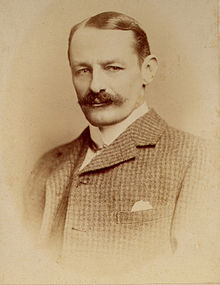
There can be no doubt that Grohman was an accomplished big game hunter and competent mountaineer. He described his exploits in several books and had the heads from his most successful safaris mounted on the walls of his Austrian estate. Moreover, unlike many of his contemporaries, he had developed a true sympathy for the idea of wildlife conservation, publicly lamenting the rapidly diminishing numbers of game all over North America.
Certainly Grohman was more than just a gentleman-sportsman. Traveling through the flooded lowlands south of Kootenay Lake, he realized at once its potential as agricultural land. If, only, somehow the vast spring runoff could be managed. And potentially it could, because the source of all this water was the Upper Kootenay River, which, near its origin, came marvelously close to the other great river of the region, the Columbia. A short canal joining the two rivers would divert the flow of the Kootenay and greatly diminish the downriver flooding. (Of course, it would likely have devastating effects on the banks of the Columbia.) It was a scheme which both engineers and the government in Victoria thought feasible, and they gave Grohman permission to undertake it.

Grohman pointed out that another way to deal with the flooding was to increase the Kootenay River’s outflow. This could be done by dredging the West Arm of the lake, just south of the modern town of Nelson. This would allow a much greater volume of water to flow via that route, instead of backing up and overflowing the south bank of Kootenay Lake.
And, in fact, the dredging was tried, half-heartedly many years later, though, by this time, any scheme that had been recommended by Baillie-Grohman was suspect.

Grohman, with no legal training whatsoever, and arguing against a very competent lawyer from Victoria, somehow managed to convince gold commissioner Kelly to rule in favour of Sproule and all of Sproule’s party. The Ainsworth Syndicate, for the time being, at least, was effectively cut off from activity at Big Ledge. In recompense for his trouble, Sproule gave Grohman a third interest in the Bluebell Mine.
Regrettably, Grohman seems to have spread himself too thin. He was constantly traveling back and forth from the Kootenays to England, to raise capital, to promote his scheme, to hire qualified partners. He was nowhere to be found, in 1884, when Ainsworth had launched his appeal of the preceding summer’s rulings. Not only was Grohman absent from the proceedings, so was the lawyer Grohman had engaged to take his place. To add a final insult to previous injury, Grohman, short on funds, soon after put his share in Bluebell up for auction. Thomas Hammill immediately snapped it up.
According to Grohman (who some historians accuse of gross exaggerations) Sproule tried to shoot him in the woods of northern Idaho that spring. More outrageous still, Grohman claims that Sproule held him at gunpoint on a train heading west out of Sandpoint and threatened to kill him at the next stop.
From that point on, Grohman had nothing to do with the goings on at Big Ledge, instead concentrating on his diversion plans. Grohman never wavered from his great vision. He was convinced that, through his singular efforts, he could create a little Arcadian paradise at the south end of Kootenay Lake: a retirement home, a well-earned reward for soldiers of the Commonwealth, both English and Canadian. This was the legacy he had in mind for himself, and he almost pulled it off.
The Wikipedia article
To learn more about the Big Ledge project, click HERE.
